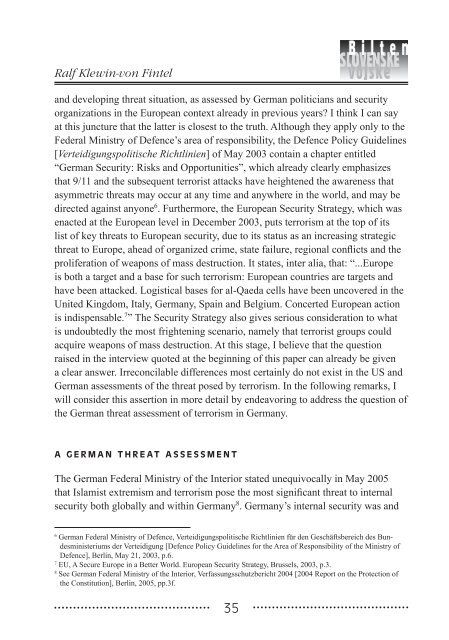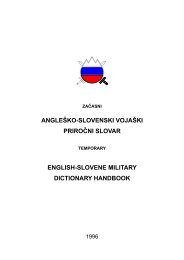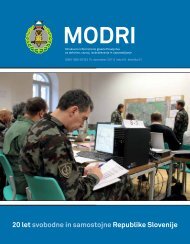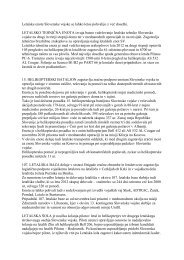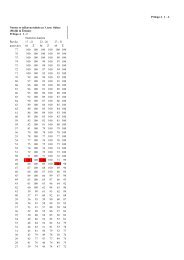Letnik 9/2, september 2007 - Slovenska vojska
Letnik 9/2, september 2007 - Slovenska vojska
Letnik 9/2, september 2007 - Slovenska vojska
Create successful ePaper yourself
Turn your PDF publications into a flip-book with our unique Google optimized e-Paper software.
Ralf Klewin-von Fintel<br />
and developing threat situation, as assessed by German politicians and security<br />
organizations in the European context already in previous years I think I can say<br />
at this juncture that the latter is closest to the truth. Although they apply only to the<br />
Federal Ministry of Defence’s area of responsibility, the Defence Policy Guidelines<br />
[Verteidigungspolitische Richtlinien] of May 2003 contain a chapter entitled<br />
“German Security: Risks and Opportunities”, which already clearly emphasizes<br />
that 9/11 and the subsequent terrorist attacks have heightened the awareness that<br />
asymmetric threats may occur at any time and anywhere in the world, and may be<br />
directed against anyone 6 . Furthermore, the European Security Strategy, which was<br />
enacted at the European level in December 2003, puts terrorism at the top of its<br />
list of key threats to European security, due to its status as an increasing strategic<br />
threat to Europe, ahead of organized crime, state failure, regional conflicts and the<br />
proliferation of weapons of mass destruction. It states, inter alia, that: “...Europe<br />
is both a target and a base for such terrorism: European countries are targets and<br />
have been attacked. Logistical bases for al-Qaeda cells have been uncovered in the<br />
United Kingdom, Italy, Germany, Spain and Belgium. Concerted European action<br />
is indispensable. 7 ” The Security Strategy also gives serious consideration to what<br />
is undoubtedly the most frightening scenario, namely that terrorist groups could<br />
acquire weapons of mass destruction. At this stage, I believe that the question<br />
raised in the interview quoted at the beginning of this paper can already be given<br />
a clear answer. Irreconcilable differences most certainly do not exist in the US and<br />
German assessments of the threat posed by terrorism. In the following remarks, I<br />
will consider this assertion in more detail by endeavoring to address the question of<br />
the German threat assessment of terrorism in Germany.<br />
A G E R M A N T H R E AT A S S E S S M E N T<br />
The German Federal Ministry of the Interior stated unequivocally in May 2005<br />
that Islamist extremism and terrorism pose the most significant threat to internal<br />
security both globally and within Germany 8 . Germany’s internal security was and<br />
6<br />
German Federal Ministry of Defence, Verteidigungspolitische Richtlinien für den Geschäftsbereich des Bundesministeriums<br />
der Verteidigung [Defence Policy Guidelines for the Area of Responsibility of the Ministry of<br />
Defence], Berlin, May 21, 2003, p.6.<br />
7<br />
EU, A Secure Europe in a Better World. European Security Strategy, Brussels, 2003, p.3.<br />
8<br />
See German Federal Ministry of the Interior, Verfassungsschutzbericht 2004 [2004 Report on the Protection of<br />
the Constitution], Berlin, 2005, pp.3f.<br />
35


